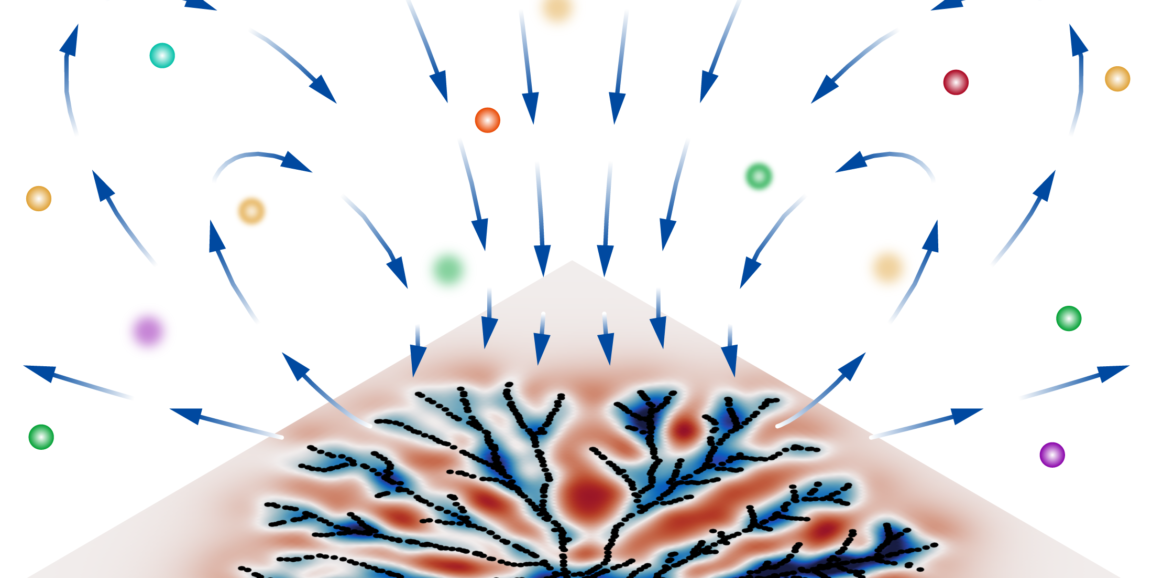When bacteria team up to form biofilms, they gain the advantage of protection but limit their ability to pursue nutrients. Interested in how these slimy masses avoid starvation, Stanford postdoctoral scholar Arnold Mathijssen, PhD, and a team of international researchers scrutinized how biofilms manipulate the invisible fluids around them to, essentially, paddle food their way.
The work, which appears in Physical Review Letters, revealed that even disorganized biofilms can produce whirling forces strong enough to pull in the nutrients they need to stay alive.
“This started off as a relatively fundamental problem but turned out to be more relevant for biomedical applications than we would have predicted,” said Mathijssen in a Stanford News article about the paper. “That’s what excites me: we just stumbled upon an idea that, by curiosity, drove us in a very different direction than where we started and what we found has a lot of potential.”
The researchers calculated how bacterial swimming moves the fluids around a single bacteria and biofilms and they found that more organized biofilms create stronger circulation. They also simulated the fluid dynamics resulting from a few different basic biofilm patterns — like biofilms arranged in star shapes or concentric circles — and combined those to figure out the circulations produced by more complicated and realistic biofilm arrangements.
Shedding light on how biofilms’ food flows may allow for the development of techniques to physically disrupt them, a potentially non-toxic approach to killing infectious bacteria. What’s more, the scale at which these researchers studied means their findings can be applied to all kinds of other situations in biology and beyond.
“We’ve talked about bacteria but we could replace the word ‘organism’ with ‘micro-robot’ and the physics would be exactly the same,” said Mathijssen in the Stanford News article, who added that synthetic drug delivery is another area where he sees potential for this research.
Image of biofilm, at bottom, with modeled flows courtesy of Arnold Mathijssen




